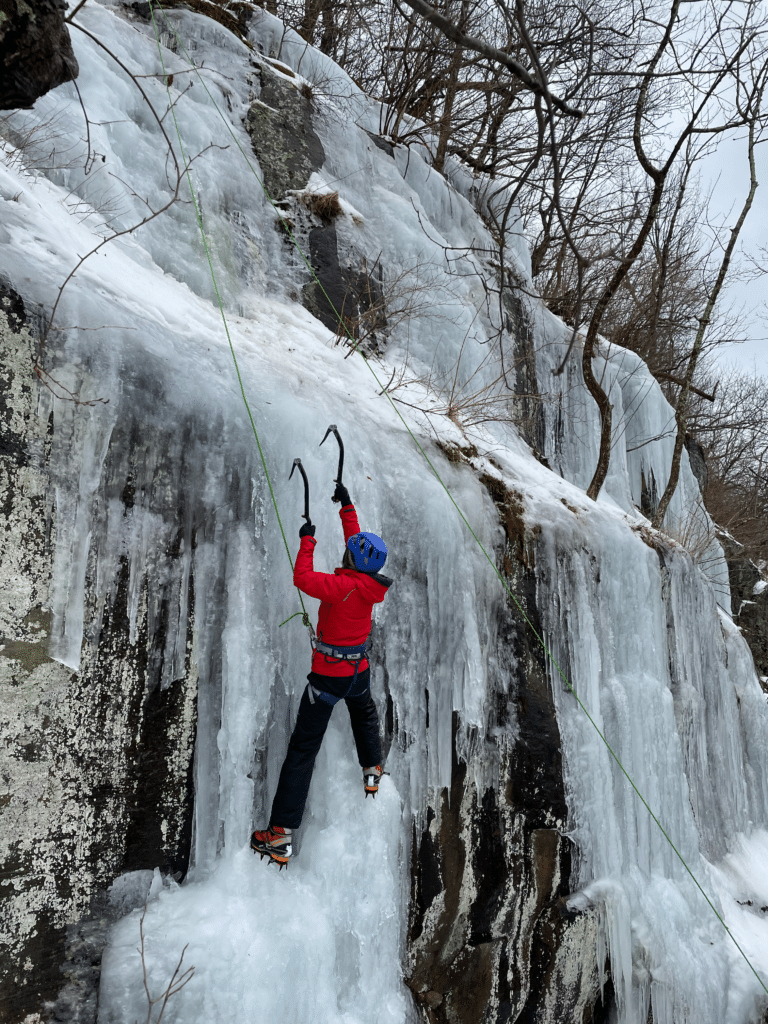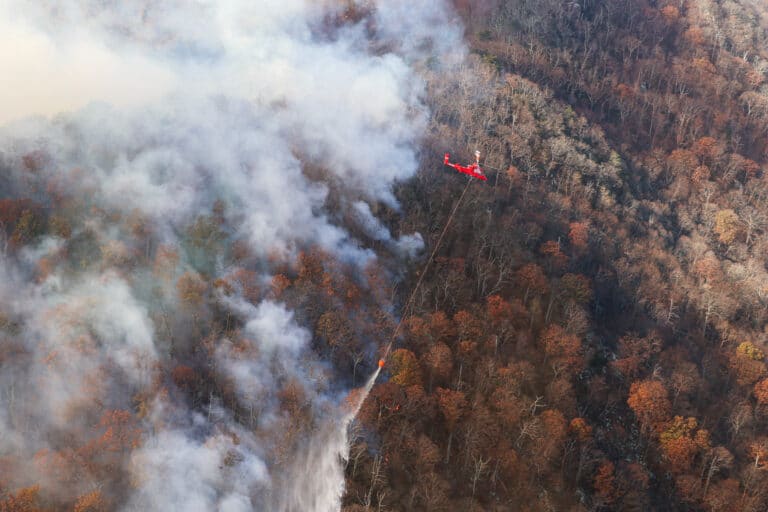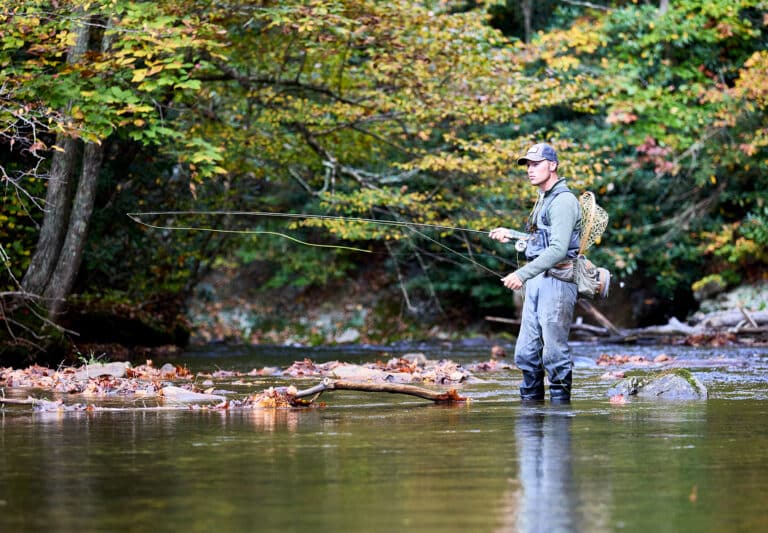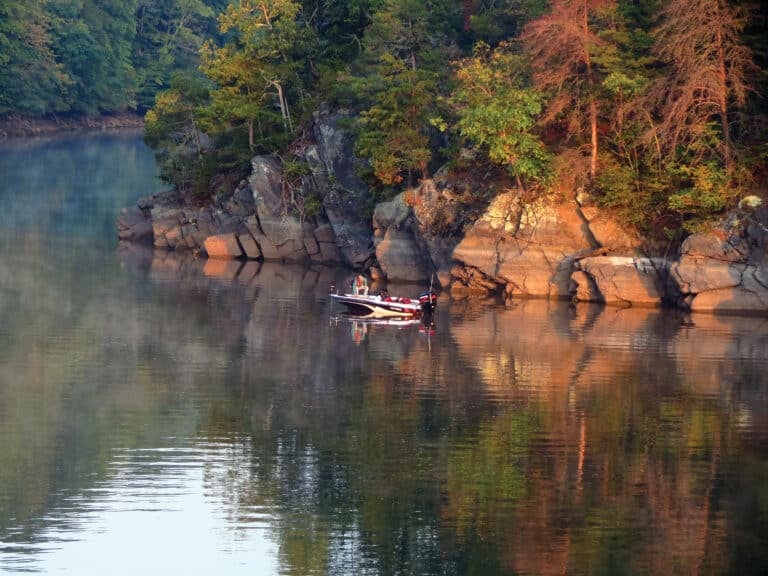 Hit the Appalachian Trail on a warm weekend and you might think there are no secrets left along this 2,180-mile trail. After all, a visit to one of the A.T.’s hotspots like McAfee Knob or the Roan Highlands can leave you feeling awestruck by the crowds alone. But contrary to popular belief, hikers can still find solitude on the A.T. Here are the last great undiscovered hikes on the world’s most famous footpath.
Hit the Appalachian Trail on a warm weekend and you might think there are no secrets left along this 2,180-mile trail. After all, a visit to one of the A.T.’s hotspots like McAfee Knob or the Roan Highlands can leave you feeling awestruck by the crowds alone. But contrary to popular belief, hikers can still find solitude on the A.T. Here are the last great undiscovered hikes on the world’s most famous footpath.
Siler Bald, N.C.
Not to be confused with Siler’s Bald in the Smokies (though it’s named after the same family), Siler sits south of the uber-popular Nantahala River and yet, the legitimate high-elevation bald sees a fraction of the hikers that flock to its nearby counterparts.
“People go to Wayah Gap and hike north to Wayah Bald and its fire tower. Hike the other direction, and you’ll hit Siler Bald, which has just as good of a view,” says Andrew Downs, trail resource manager for the Appalachian Trail in North Carolina, Tennessee and Georgia. Downs adds that in general, any part of the A.T. south of the Nantahala River is going to be less crowded than the trail to the north between the river and Great Smoky Mountains National Park. Access is limited because of the presence of the Southern Nantahala Wilderness Area and the biggest population center south of the Nantahala River is Franklin, which isn’t exactly a metropolis.
Siler has the goods hikers crave. At 5,216 feet high, the grassy mountaintop gives you a 360-degree view that stretches into Georgia to the south, includes a piece of Lake Nantahala to the west, and the Wayah Bald fire tower to the north. Expect wildflowers around the bald during the spring and blueberries in the fall.
Logistics: Park at Wayah Gap and hike two miles south to Siler Bald. The climbing is gradual and the payoff is big. Turn the trek into a multi-day by continuing 14 miles south to Albert Mountain, where a fire tower will give you another nearly mile-high 360-degree view. An abundance of shelters in this stretch will help keep your pack light.
White Rocks and Blackstack Cliffs, Tenn./N.C.
This section of the A.T. follows the North Carolina and Tennessee border, tracing the crest of the Bald Mountains Range that divides the two states. Interstate 26 is nearby, as are a few recreation areas popular with equestrians, but the Appalachian Trail hugs the ridgeline, too far removed from any large population centers to attract the casual hiker. So the views you’ll bag from the A.T.’s rocky outcroppings will be all your own.
An eight-mile lollipop loop will deliver you to stunning views from two separate cliff bands and take you over the most underrated ridge walk on the trail. White Rocks Cliff is a quartzite outcropping on the Tennessee side of the trail with views into Greenville, Tennessee below. Blackstack Cliffs is a similar outcropping on the opposite side of the trail with a big view into Pisgah National Forest in North Carolina. Shortly after hitting these two cliffs, you’ll find yourself climbing the stone steps to Firescald Ridge, for nearly two miles of narrow ridge walking and rock hopping with endless views in all directions.
Logistics: Pick up the A.T. six miles north of Allen Gap at Camp Creek Bald, then follow the white blazes north as the trail shimmies along the edge below the summit. You’ll hit the side trail to White Rocks Cliffs in two miles, and a couple hundred yards farther you’ll see the spur trail to Blackstack Cliffs. Keep hiking the A.T. north beyond Bearwallow Gap to the rocky, precarious, and stunning route over Firescald Ridge. The Carolina Mountain Club sweat blood to move the A.T. over the most dramatic route possible along this ridge. After rock hopping your way across the crest, you can create a loop by taking the old A.T., which is now marked Bad Weather Trail, south back toward Bearwallow Gap, Blackstack Cliffs, and your car.
Chestnut Knob, Va.
As everyone knows, the A.T. runs north and south, but in Southwest Virginia, as the trail leaves the High Country of Mount Rogers, it cuts west toward Pearisburg and the West Virginia border. Here, it becomes a washboard trail, climbing up and over peaks like Walker Mountain and wrapping around Burke’s Garden, a farming community and valley known as “God’s Thumbprint,” because it’s surrounded by a 360-degree ridge, like someone squished their thumb into the mountains. Here lies what might be the most remote and least traveled section of the Appalachian Trail below the Mason Dixon. Road access is scarce, federally designated Wilderness areas are plentiful, and hikers are few and far between.
“Just getting to the A.T. in this corner of Virginia is part of the adventure,” says Steve Yontz, trail maintainer for the Piedmont Appalachian Trail Hikers. “Honestly, the easiest way to access the A.T. at Burke’s Garden, is by hiking the A.T.”
Make the effort, and you’ll be rewarded with constant views for nearly two miles on Chestnut Knob, a high elevation bald that was grazed by livestock until the late 1980s. On a clear day, you can see Mount Rogers 80 miles south, and even Grandfather Mountain farther into North Carolina. Go north from Chestnut Knob onto the crest of Garden Mountain, and you’ll get more views into pastoral Burke’s Garden below.
Logistics: For a short trip, access the A.T. from Walker Gap and hike south a mile to Chestnut Knob and carry on south until the trail runs out of views. Retrace your steps and go across the gap north onto Garden Mountain for an extra leg-stretch. But if you truly want to experience the solitude and beauty that this stretch of the A.T. affords, start where the A.T. crosses Hwy 11 and climb Walker Mountain on your way to Chestnut Knob. You’ll put in big miles, but walk through old farmsteads, bag big views, and get to stay at Chestnut Knob shelter, which offers excellent star gazing thanks to the lack of ambient light.
The Roller Coaster, Va.
To say that any section of the Appalachian Trail in Northern Virginia is “undiscovered” is a bit of a stretch. “There’s no unpopular section of the trail in this day and age, but certain pieces aren’t necessarily in the limelight like the more well-known destinations,” says Bob Sickley, Mid-Atlantic trail resource manager for the Appalachian Trail Conservancy. The Roller Coaster, a 13.5-mile length of trail packed with non-stop ups and downs, is one of those under-appreciated stretches of trail. Consider it the “overshadowed little brother” to the A.T. inside nearby Shenandoah National Park. The Roller Coaster is the A.T.’s swan song in Virginia, offering the last memorable piece of trail before reaching the “psychological half-way point” at Harper’s Ferry, W.Va. Known for its constant elevation change, you’ll climb more than a dozen significant hills for a total of 5,000 feet of gain as you make your way toward West Virginia. The tread is rocky, and the climbing is short but steep without a switchback in sight thanks to an unusually narrow right of way for the trail.
The Roller Coaster is a hell of a workout, and a great place to test your mettle if you’re just breaking into backpacking. You’ll also get to enjoy the primo view of Shenandoah Valley to the west from Raven Rock, aka Crescent Rock.
Logistics: Pick up the A.T. at Ashby Gap, where the trail crosses Route 50 and head north towards the Blackburn Trail Center. Prepare yourself for nearly constant ups and downs with 200-500 feet of elevation for each hill. The section offers a no-brainer overnight opportunity, thanks to the Bears Den Trail Center, a popular hiker hostel located 100 yards off the trail roughly half way through the Roller Coaster.
Bly Gap, Ga. and N.C.
The 16-mile stretch of the A.T. between Dick’s Creek Gap in Georgia and Deep Gap in North Carolina is in a sort of “no-man’s land,” far enough removed from hot spots like the Southern Terminus at Springer and the booming Nantahala Gorge. Hike the whole 16 miles, and you’ll cross the Georgia/North Carolina border at the halfway mark, but not a single road. In fact, the majority of the A.T. in this remote corner of the Appalachians hugs the western edge of the Southern Nantahala Wilderness Area, a relatively large but unknown federally designated Wilderness that covers the N.C./Ga. border. Access is so limited, that if you wait out the thru-hiker rush that comes in early spring, you’ll probably have the two trail shelters all to yourself.
The climbing starts early as you leave Dick’s Creek Gap and yo-yo your way up and down ridges on your way to the state line. But consider the Georgia section of trail a warm up for the climb up Courthouse Bald in North Carolina, where the trail gains 1,500 feet via a series of relentless switchbacks. The views in Georgia are limited, but there’s a killer campsite and long-range view into the mountains of North Carolina at Bly Gap, 8.5 miles into the hike. From Muskrat Creek Shelter, take a .5-mile blue blaze to Ravenrock Ridge, a cliff with one of the most underrated views along the entire A.T. Other highlights include blooming rhodo in June. And did we mention the complete lack of roads?
Logistics: Begin at Dick’s Creek Gap, where US 76 crosses the trail and head north. The climbing comes fast and builds as you move towards Deep Gap, N.C. where USFS 71 provides your “take out.” The forest road is gated during the winter. Two shelters sit on this portion of the trail, but their awkward location (Plumorchard Gap Shelter is just 4.5 miles into your hike) make it more practical to set up camp at Bly Gap just inside North Carolina. If you’re looking for a longer hike, the possibilities for side hikes through the Southern Nantahala Wilderness Area are plentiful. •








